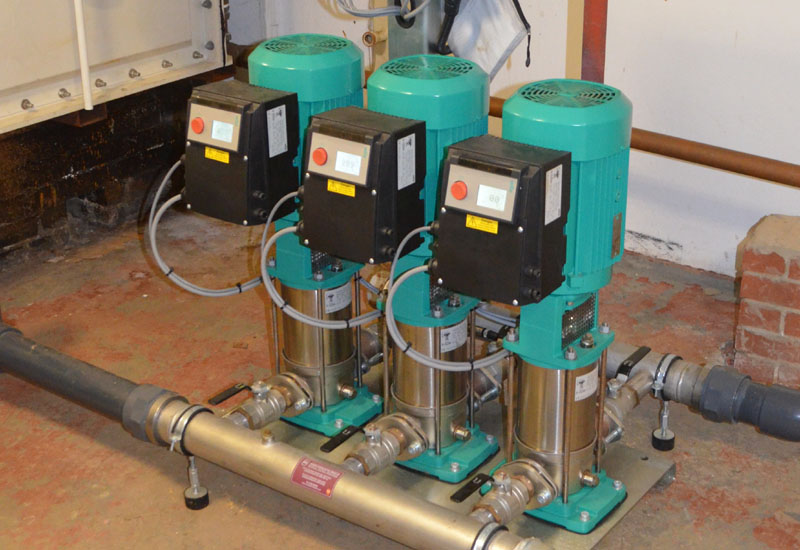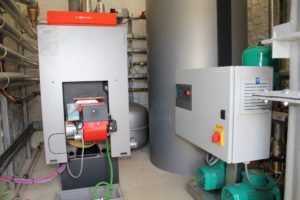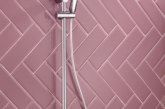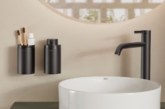
Gary Wheatley, Training & Technical Manager, Wilo UK balances the high pressure water desires of homeowners with the pressures delivered through the mains.
 Water supply and pressure is an important issue for homeowners and at times their desires rarely seem to match what is delivered through the mains. With many large new homes providing multiple bathrooms, wetrooms and en-suites – and even smaller homes offering en-suites and family bathrooms – there is a need for the water pressure in the mains to be boosted, thereby providing the pressure through showerheads that modern living demands.
Water supply and pressure is an important issue for homeowners and at times their desires rarely seem to match what is delivered through the mains. With many large new homes providing multiple bathrooms, wetrooms and en-suites – and even smaller homes offering en-suites and family bathrooms – there is a need for the water pressure in the mains to be boosted, thereby providing the pressure through showerheads that modern living demands.
Add to that the fact that most homes these days have a washing machine and dishwasher on the go, and the demand for water – even with appliances being designed to use less water – is far higher than our parents. Filling a tin bath once a week from kettles in front of the fire in the scullery is, thankfully, behind us – but how can we meet increasing demands for instant hot water?
The market for ‘whole house’ mains water pumps has grown in recent years in response to changing lifestyles. Now, more homes are having a pressurisation pump and a water reservoir tank fitted to ensure there is always a supply of water available and the pressure to get the water from the holding tank into the pipes and out of the taps and showers around the house.
Homes like hotels
People often wonder why, when they stay in a hotel, the shower operates perfectly at a time when all the guests want a shower or a bath. The technology that ensures this is possible is also available for homes – in a smaller version of course.
Increasing numbers of homes are having a reservoir tank installed alongside a pressure boosting pump to ensure that the water pressure is at a level to provide hot water when and where you want it, when the natural pressure from the mains is simply inadequate or unreliable.
Alternatively you can have a small self-priming pump and pumping station installed which combines a range of high efficiency technologies and tremendous operational safety.
Low pressure
It’s a fact that particularly in areas of high water usage – London in particular, but also in other larger towns and cities – water pressures at the mains have been reduced by water companies, who see this as a good way to reduce their water leakage rates.
If the pressure is turned down a notch or two, the water flowing past a leak does so under less pressure and less water spurts out of the split and disappears into the ground. This, in particular, affects the many high rise apartment blocks, both privately owned homes and social housing managed schemes.
But it’s not just the high rise blocks that suffer when the water pressure is too low. In some parts of London the pressure has been reduced to a level whereby water from the mains will not get above the third floor unaided.
Boosting sets
Wilo has been supplying its reliable pressure boosting sets to guarantee water at serious pressure, even at the top floor of many high rise blocks of flats across London, for several years. For these apartment blocks there is no alternative but to install pressure boosting systems. The solution is a relatively simple one – involving easy installation usually in the basement of these buildings.
One recent Wilo installation saw the water pressure problems solved in less than two hours. Four tower blocks in Enfield, needed pressure boosting equipment to get the mains water reliably up to the top of the 13 storey buildings. The existing equipment was not up to the job and its reliability had begun to be called into question. What was needed was a solution that would provide reliability, cost effectiveness and the minimum of disruption to the tenants in the nearly 400 apartments affected.
The solution selected was a comprehensive range of pressure boosting sets from Wilo Uk. The company’s Comfort – Vario COR-3 Helix VE speed controlled pressure booster set was supplied with a CAVSA anti surge valve to address the potential issue of hydraulic shock in the mains water system.
Under control
Controlling the flow of water into the system can prove difficult, as you don’t want to affect the flow rate under normal working conditions. Wilo multi-pump sets can be fitted with a CFS (controlled fill system) which limits the starting sequence after a forced shut down, reducing the rate at which the system is refilled. Preventing a vacuum can be achieved by fitting CAVSA valves (combined air vent and surge arrestor) at the top of each riser which will act as a vacuum break by allowing air to enter the system. These valves will also control the release of the air from the system when it starts to refill, therefore slowing down the rate at which the water enters the system.
The pump set selected for the Enfield project combines three pumps. This approach sees one operating, one able to assist if the call on water exceeds the capacity of that first pump, whilst a third is on standby. All three pumps operate on a cycle, ensuring even wear across each of the pumps, with the added benefit that there is no stagnation of water addressing any legionella bacteria issues in the system.
Even large private homes have opted for this pumping approach albeit on a smaller scale, to ensure that water pressure is adequate around the house.








